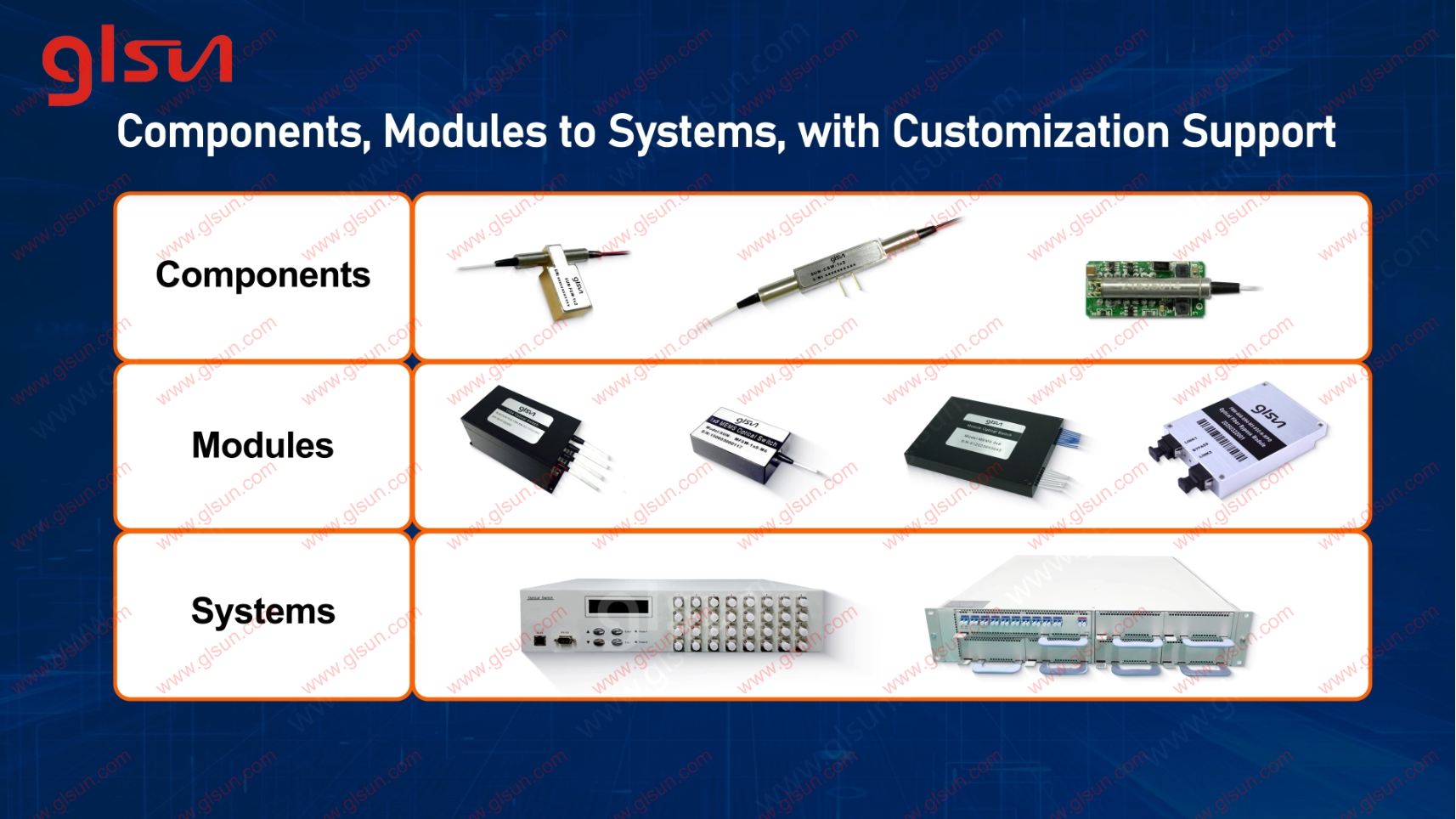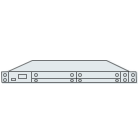Fiber Optic Tech
Analysis of the Core Applications of Optical Switches in Data Centers
With the rapid development of cloud computing, big data, and artificial intelligence, data centers, as the core of modern IT infrastructure, face unprecedented challenges in performance, efficiency, and scalability. Traditional data center networks primarily rely on electrical switching technologies, but as data traffic surges, the limitations of electrical switching in terms of bandwidth, latency, and power consumption have become increasingly evident. Optical switches, as an emerging network interconnection technology, are gaining prominence in data center network architectures due to their high bandwidth, low latency, and low power consumption. This article provides an in-depth analysis of the core applications of optical switches in data centers, exploring their technical advantages, use cases, and future potential.
Overview of Optical Switch Technology
An optical switch is a device that uses optical principles to route and switch optical signals directly in the optical domain without converting them into electrical signals for processing. Its core components include Micro-Electro-Mechanical Systems (MEMS), liquid crystal optical switches, silicon photonic devices, and Wavelength Division Multiplexing (WDM) technologies. The key features of optical switches include:
High Bandwidth: Optical switches can support transmission rates of hundreds of Gbps or even Tbps, meeting the ultra-high bandwidth demands of data centers.
Low Latency: By eliminating the need for optical-electrical conversion, optical switches achieve extremely fast switching speeds, typically on the order of microseconds to milliseconds.
Low Power Consumption: Compared to traditional electrical switching, optical switches consume significantly less power, especially in high-"" scenarios.
High Scalability: Optical switches support large-scale port expansion, accommodating the rapid growth of data center network scales.
Core Applications of Optical Switches in Data Centers
Optical switches find critical applications in data centers across several key areas:
1. Data Center Network Topology Optimization
The network topology of a data center directly impacts its performance and cost. Traditional data centers often adopt a three-tier architecture (core, aggregation, and access layers), which can create bottlenecks under high traffic demands. Optical switches, with their high port density and throughput, enable the construction of flattened, all-optical interconnection network topologies, such as Clos-based optical switching networks.
All-Optical Interconnection: Optical switches can achieve all-optical connections between server racks in data centers, reducing the reliance on electrical switching equipment and thereby lowering latency and power consumption. For instance, Google has implemented optical switch technology in its Jupiter network, significantly enhancing intra-data center interconnection efficiency.
Dynamic Reconfiguration: Optical switches support dynamic network reconfiguration, allowing connection paths to be adjusted based on real-time traffic demands. This flexibility is particularly valuable for handling bursty traffic, such as in machine learning training tasks.
2. Support for Bandwidth-Intensive Applications
The rise of artificial intelligence, video streaming, and distributed computing has increased the demand for processing bandwidth-intensive tasks in data centers. Optical switches leverage Wavelength Division Multiplexing (WDM) and Dense WDM (DWDM) technologies to transmit multiple wavelengths of signals in parallel over a single optical fiber, significantly improving bandwidth utilization.
AI and Machine Learning: In distributed training scenarios, GPU clusters require frequent exchanges of large-scale data. Optical switches provide low-latency, high-bandwidth interconnections, ensuring efficient execution of training tasks. For example, NVIDIA has explored optical switch applications in its DGX systems to optimize GPU cluster communication efficiency.
High-Performance Computing (HPC): Optical switches facilitate rapid data exchange between nodes in HPC environments, particularly for scientific computing tasks requiring real-time processing of massive datasets.
3. Energy Efficiency and Green Data Centers
Energy consumption in data centers is a growing concern, particularly in the context of global carbon neutrality goals. The low power consumption of optical switches makes them a key technology for achieving green data centers.
Reduced Optical-Electrical Conversion: In traditional networks, optical signals must be converted to electrical signals multiple times for processing, increasing both latency and energy consumption. Optical switches eliminate the energy overhead of optical-electrical conversion by performing signal switching directly in the optical domain.
Efficient Cooling: Optical switch equipment generates significantly less heat than electrical switches, reducing the cooling requirements of data centers and further conserving energy.
4. Data Center Scalability and Modular Design
As data centers continue to scale, modular design has become a mainstream trend. The high port density and flexibility of optical switches make them well-suited for modular data center architectures.
Hyperscale Data Centers: In hyperscale data centers (e.g., Amazon AWS, Microsoft Azure), optical switches can support thousands of port interconnections, meeting the massive connectivity demands between server racks.
Inter-Data Center Interconnection (DCI): Optical switches are also used for optical interconnections between data centers, enabling efficient data transmission over long-distance fiber networks. For example, Facebook employs optical switches in its data center networks to optimize cross-regional data synchronization.
5. Network Virtualization and SDN Integration
Software-Defined Networking (SDN) is a key trend in modern data center network management. The integration of optical switches with SDN enables more efficient network management and resource al.
Dynamic Traffic Scheduling: Through SDN controllers, optical switches can dynamically adjust optical paths based on real-time traffic demands, optimizing network resource utilization.
Network Slicing: In 5G and edge computing scenarios, optical switches support network slicing, providing customized optical connections for different service types, such as low-latency or high-throughput services.
Challenges Facing Optical Switches
Despite their significant advantages, the widespread adoption of optical switches in data centers faces several challenges:
Cost Issues: The manufacturing and deployment costs of optical switch equipment, particularly those based on MEMS or silicon photonic technologies, remain high, limiting their use in small and medium-sized data centers.
Technical Complexity: The integration and maintenance of optical switches require specialized expertise, especially when dealing with WDM and optical signal modulation.
Compatibility Issues: Hybrid deployments of optical switches with existing electrical switching equipment may face compatibility challenges, requiring additional adapters or protocol support.
Future Development Prospects
With advancements in Photonic Integrated Circuits (PICs) and silicon photonics, the cost and complexity of optical switches are expected to decrease further. In the future, optical switches may achieve breakthroughs in the following areas:
All-Optical Data Centers: As optical switching technology matures, data centers may transition to fully optical network architectures, eliminating the bottlenecks of electrical switching entirely.
AI-Driven Optimization: By integrating AI algorithms, optical switches can enable smarter traffic prediction and path optimization, further improving network efficiency.
Standardization and Modularization: The standardization and modular design of optical switch equipment will drive their adoption in small and medium-sized data centers.
As a revolutionary network technology, optical switches are redefining data center interconnectivity. Their advantages in high bandwidth, low latency, low power consumption, and scalability make them critical for optimizing network topologies, supporting bandwidth-intensive applications, enabling green data centers, and advancing network virtualization. Despite challenges related to cost and technical complexity, ongoing advancements in photonic technologies are poised to position optical switches as a mainstream technology in data center networks, providing more efficient and sustainable network infrastructure for the era of cloud computing and artificial intelligence.




















